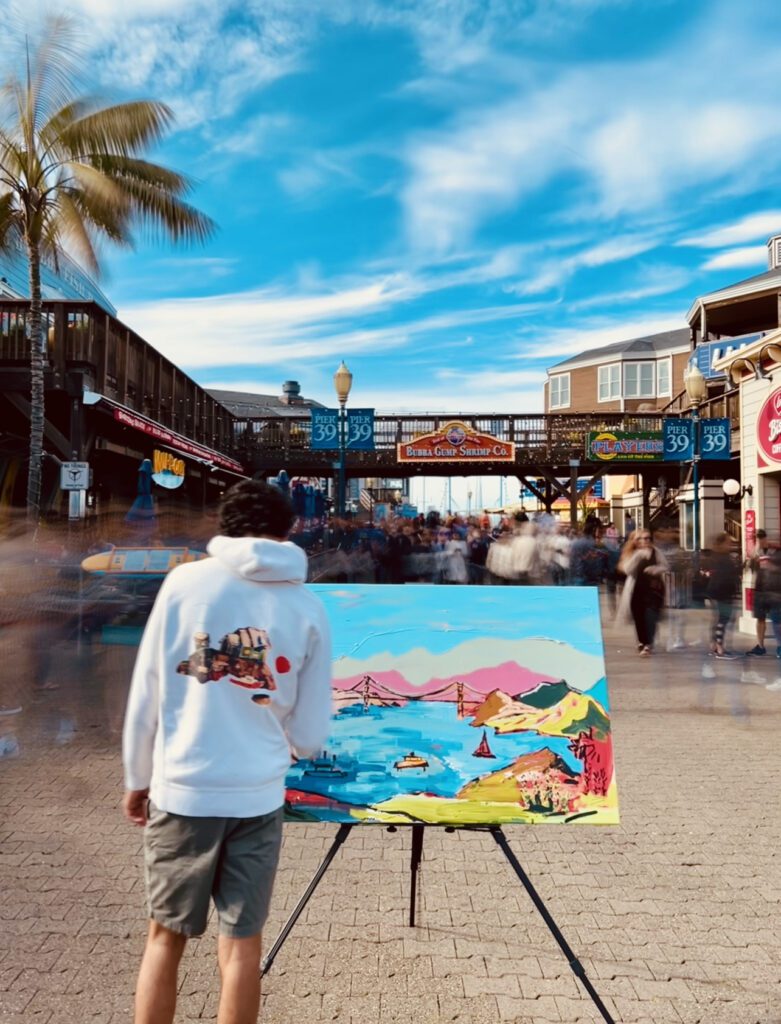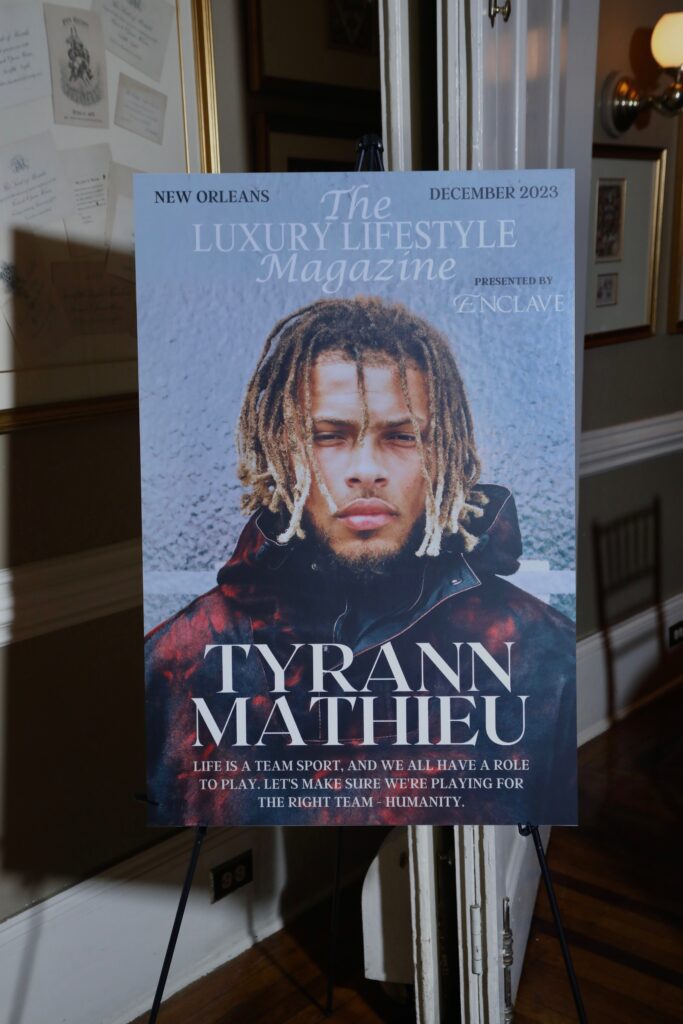In the world of art, some individuals transcend their craft, using their creative energy to communicate vital messages and effect change on a global scale. Evan Sharma is that artist, but also a climate activist and philanthropist whose work embraces mathematical and geometric approaches, neo-expressionism, and a profound commitment to storytelling. Through his creative endeavors, Sharma strives to inspire dialogue and thought, igniting a spark within every viewer. From his early inspirations to his groundbreaking MMOCOW project, his artistic journey has been one of purpose and impact.
At the age of 12, critics coined Sharma’s work as Fauvist and neo-expressionist, captivated by his use of intense colors and thought-provoking subject matter. However, Sharma’s journey into the realm of art began long before that. From an early age, he displayed a curious and imaginative spirit, fueled by his love for the outdoors and a fascination with his older brother’s graffiti art. It was a visit to the Louvre at the young age of 10 that truly ignited his passion for painting. Mesmerized by the paintings’ size, stories, and emotions they conveyed, Sharma returned home with a newfound determination to paint. From that moment, his life was forever intertwined with his artistic vision.

As he matured, Sharma’s artistic approach took a more refined direction. Inspired by Matisse, Bacon, Chagall, and Rembrandt, he began incorporating a mathematical and geometric perspective into his work. Sharma saw his compositions as puzzles, intending to guide the viewer’s gaze and focus deliberately. He immersed himself in extensive research on his subjects, layering their stories on the canvas like a timeline in three dimensions. For instance, in his portrayal of Gandhi, Sharma incorporated an underpainting of Gandhi on the trains in South Africa—a critical time in the leader’s life, buried beneath subsequent layers, telling a deeper narrative. “I often think of the canvas in 3 dimensions as a timeline and then layer my paintings accordingly. For instance, when I created an underpainting of [Gandhi] on the trains in South Africa, I went over that layer with white so it is buried by the next layer of the painting. To me, I am telling a story where the z-axis or 3 dimensions of the painting creates a timeline of sorts and I am telling the story of their lives, as I interpret it.” says Sharma.
Art, for Sharma, is the intentional and coordinated execution of creativity that seeks to open dialogue and provoke thought. Sharma’s artistic creations form a captivating tapestry of storytelling, conveying powerful messages through each brushstroke. With his portraits, he seeks to encapsulate the very essence of his subjects, immortalizing pivotal transformative moments that have left indelible imprints on their lives. His portrayal of Mandela encompasses the leader’s time in jail on Robben Island—a period that profoundly impacted his beliefs. The painting’s intricate texture and depth contribute to the narrative, evoking a powerful emotional response from the viewer.

Sharma sees artists as individuals who exist at the intersection of different disciplines, blending their passions to create new perspectives. He firmly believes that everyone possesses the potential to be an artist, but fear of judgment often inhibits people from embracing their creative side fully. To him, art is a limitless channel through which human potential can be unleashed and celebrated. In turn, Sharma’s landscapes also masterfully tackle the pressing issue of global warming. He incorporates materials related to his scientific research on climate change to deliver a solutions-oriented message. For instance, enzymes like methane monoxygenase (MMO) are integrated into the paints, symbolizing the potential for alternative green energy solutions.
MMOCOW stands as one of Sharma’s most ambitious projects, a culmination of his work in both art and science. The concept arose from Sharma’s school research project on methane emissions and MMO enzymes’ impact on bovine methane reduction. MMOCOW combines artistic form with scientific purpose, with each figure containing elements representing Sharma’s vision. For example, the different-sized eyes symbolize the yin and yang concept of balance, akin to his earlier paintings. The inclusion of a backpack refers to methane backpacks used for green energy collection, further emphasizing the project’s environmental message. Sharma plans to infuse the paintings with MMO enzymes, offering viewers a unique and immersive experience.

The future of MMOCOW is envisioned to encompass various elements of climate change beyond methane emissions. Sharma aims to incorporate scientific discoveries, such as plastic-eating bacteria or algae that reduce ocean acidification, into his paintings. The MMOCOW project, while currently focused on methane emissions, serves as a stepping stone to explore a plethora of climate-related issues through artistic expression.
Beyond his art, Sharma’s philanthropic endeavors exemplify his commitment to using his creativity to make a positive impact. The CovART Challenge, a collaborative visual art initiative, was born out of Sharma’s desire to help children in Africa affected by the COVID-19 pandemic. By raising funds and providing essential meals for the underprivileged, the CovART Challenge aligns with the United Nations’ 17 Sustainable Development Goals (SDGs), ensuring its sustained impact in various regions in need.

Evan Sharma’s artistic journey is one of purpose, passion, and a profound desire to change the world for the better. His blending of art and science, storytelling, and activism creates a harmonious symphony of creativity and purpose. As the MMOCOW project and the CovART Challenge continue to evolve, Sharma’s vision is set to resonate with audiences worldwide, inspiring individuals to embrace their artistic potential and work towards a brighter, more sustainable future. Through his canvases and philanthropy, Evan Sharma epitomizes the essence of an artist—one who uses creativity as a catalyst for positive change.




